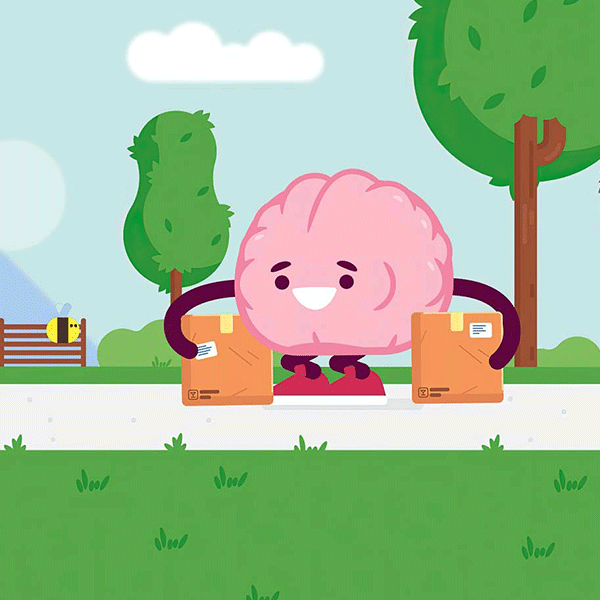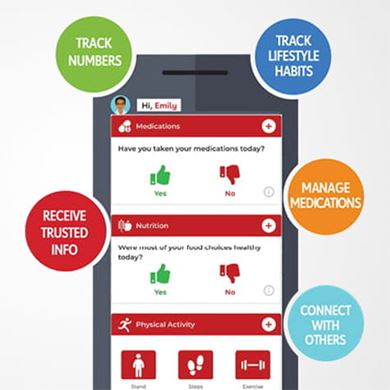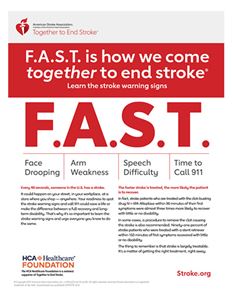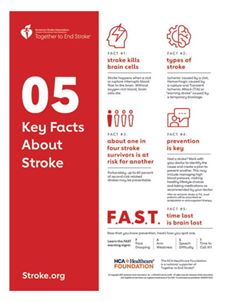 American Stroke Association
American Stroke Association American Stroke Month
Learning F.A.S.T. Can Save Lives
When you spot a stroke warning sign, act fast. Recognizing the stroke warning signs and calling 911 immediately may make the difference between a strong recovery or long-term disability; survival or death.

The HCA Healthcare Foundation is a national supporter of Together To End Stroke®.
-

Face Drooping
Does one side of the face droop, or is it numb? Ask the person to smile. Is the person's smile uneven?
-

Arm Weakness
Is one arm weak or numb? Ask the person to raise both arms. Does one arm drift downward?
-

Speech Difficulty
Is speech slurred or difficult to understand? Ask the person to repeat a simple sentence.
-

Time to Call 911
If you have any of these symptoms or see someone else having them, call 911 immediately!
The F.A.S.T. Experience
In this interactive environment, you’ll learn what the warning signs of stroke might look, feel and/or sound like.

Prevent a Second Stroke
Having a stroke puts you at a higher risk for a second one, however, stroke survivors have the power to reduce their risk for having another stroke. There are things you can do to reduce your risk, starting with identifying what caused your stroke and uncovering all of your personal risk factors.

The HCA Healthcare Foundation is the national sponsor of Getting to the Heart of Stroke™
Up to 80% of strokes may be prevented.

New!
The Heart & Stroke Helper™ App
Are you looking for support after your stroke? Our tool is designed for stroke survivors and their caregivers to better manage your health all in one place.










